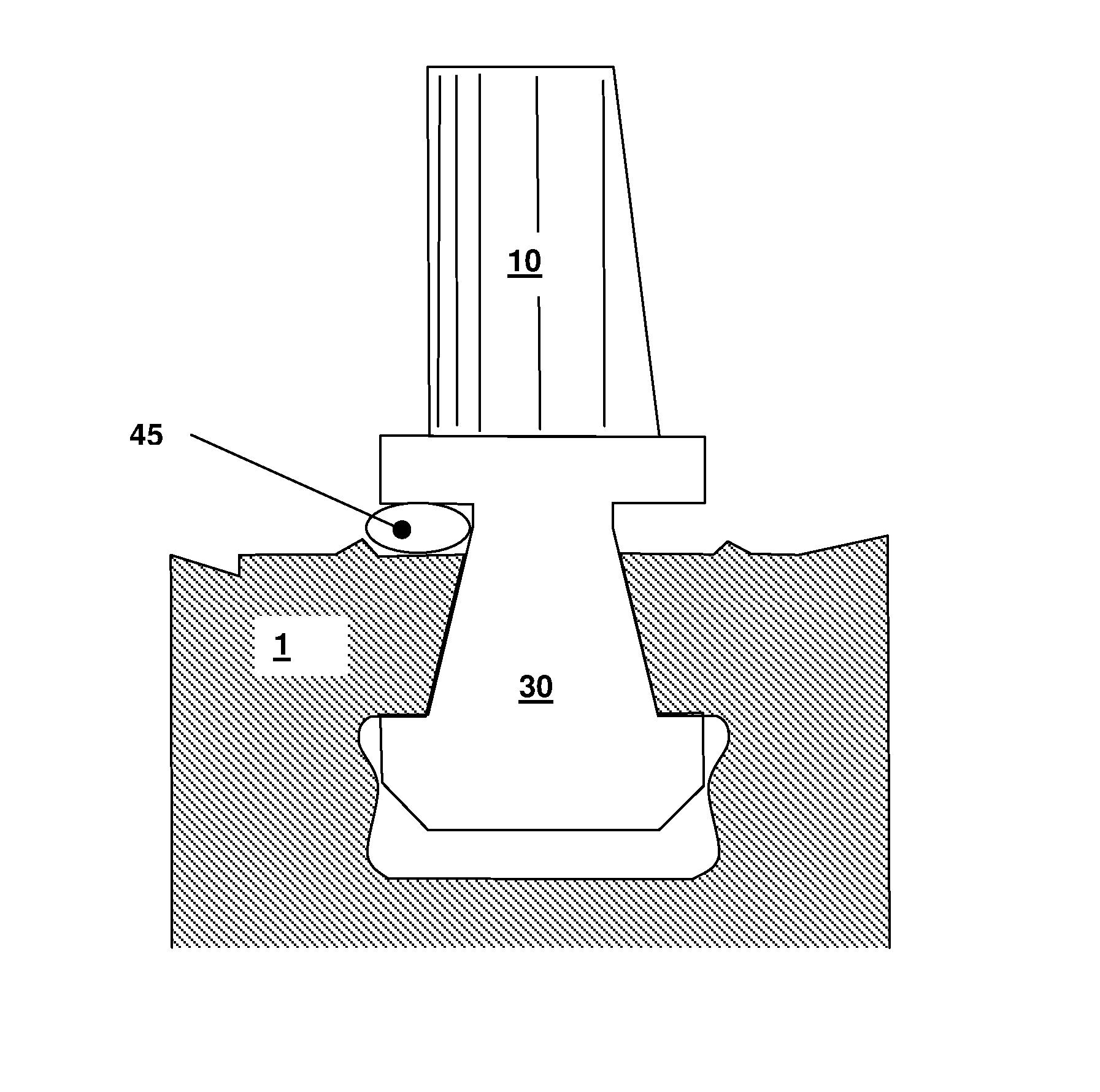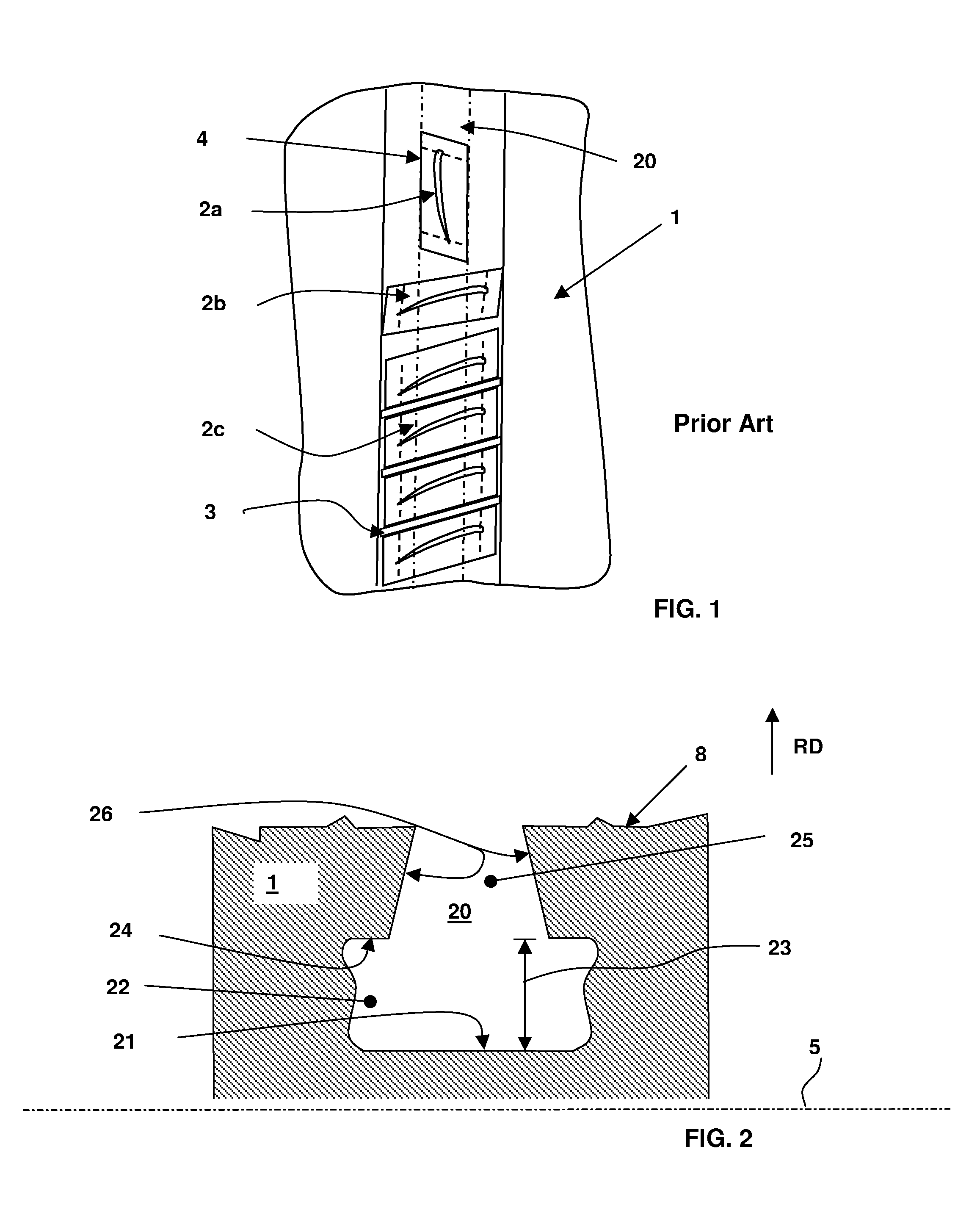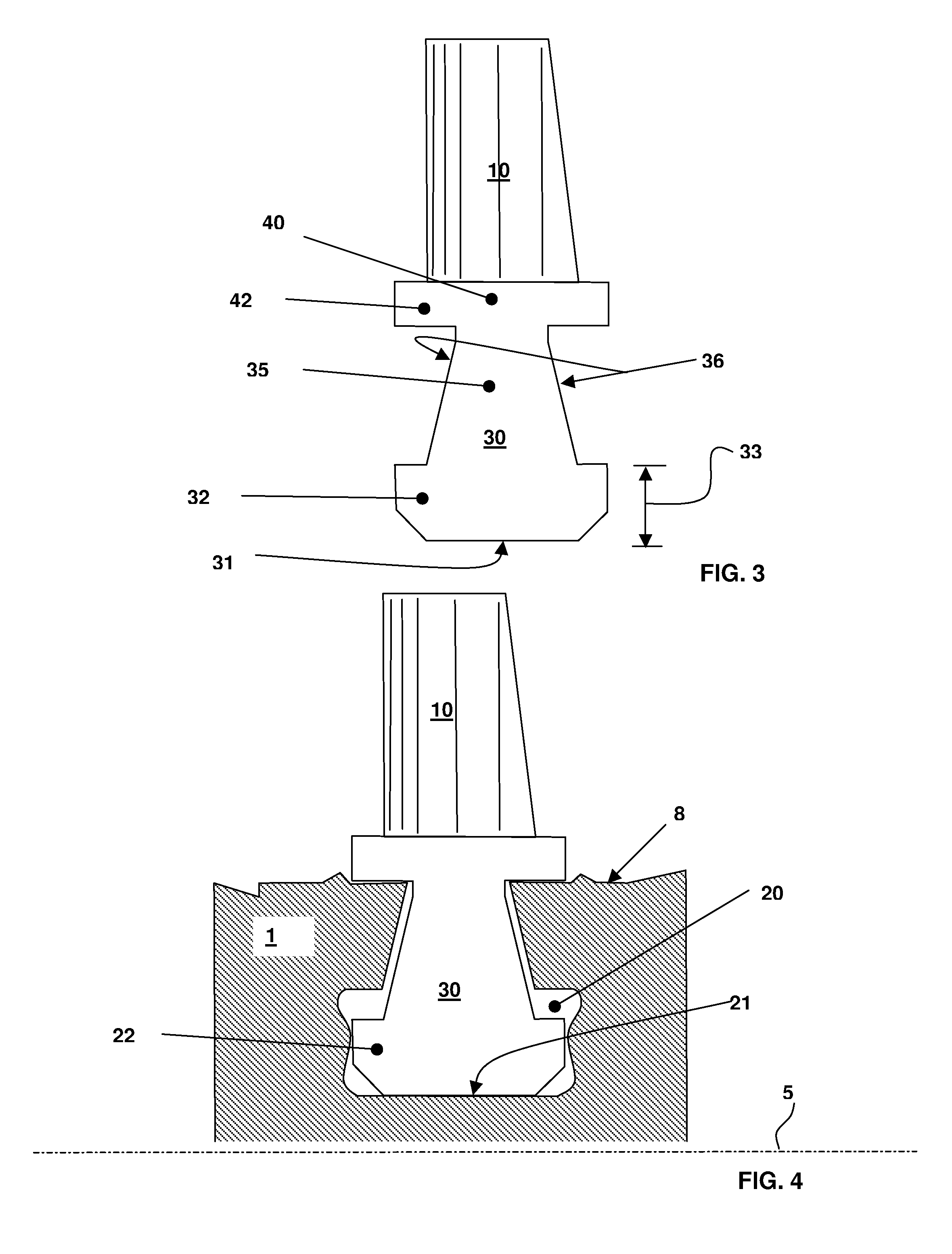Turbine assembly
a technology of turbines and components, applied in the direction of propellers, propulsive elements, water-acting propulsive elements, etc., can solve the problems of high production costs, time-consuming fitting, and limitations of steam path design, so as to reduce the fitting time and increase the space for additional roots
- Summary
- Abstract
- Description
- Claims
- Application Information
AI Technical Summary
Benefits of technology
Problems solved by technology
Method used
Image
Examples
Embodiment Construction
[0020]Preferred embodiments of the present invention are now described with reference to the drawings, wherein like reference numerals are used to refer to like elements throughout. In the following description, for purposes of explanation, numerous specific details are set forth in order to provide a thorough understanding of the disclosure. It may be evident, however, that the disclosure may be practiced without these specific details.
[0021]FIG. 1 shows a prior art blade assembly having blades 2 in various states of being fitted into a rotor 1. Each of the blades 2 has a parallelogram shaped platform and / or root 4 wherein the parallelogram shape allows them to be fitted by over-rotation. The fitting is performed by fitting each blade 2a into the channel of the rotor 20 while other, already fitted blades 2b are over-rotated to provide addition space in the channel 20. Once all blades 2c are fitted, the correct blade stagger angle is achieved by the fitting shims 3 between the blade...
PUM
 Login to View More
Login to View More Abstract
Description
Claims
Application Information
 Login to View More
Login to View More - R&D
- Intellectual Property
- Life Sciences
- Materials
- Tech Scout
- Unparalleled Data Quality
- Higher Quality Content
- 60% Fewer Hallucinations
Browse by: Latest US Patents, China's latest patents, Technical Efficacy Thesaurus, Application Domain, Technology Topic, Popular Technical Reports.
© 2025 PatSnap. All rights reserved.Legal|Privacy policy|Modern Slavery Act Transparency Statement|Sitemap|About US| Contact US: help@patsnap.com



